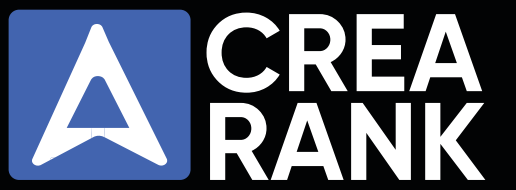Master Web Design: Your Comprehensive Guide to Website Design
If you’re eager to enhance your understanding of web design, this resource hub is tailored for you. Whether you’re a novice seeking foundational knowledge or an expert aiming to refine your skills, you’ll find valuable resources here. Additionally, you can leverage helpful utilities such as our complimentary web design cost estimator. Keep exploring to enrich your comprehension of website design further!
Effective web design plays a crucial role in the digital marketing endeavors of any business. Consider your reaction the last time you encountered a website with subpar design: Did you experience frustration? Were concerns about the security of your data raised due to its unprofessional appearance? The significance of first impressions extends to web design!
The visual appeal of a website can sway visitors to engage further and make purchases, all while shaping their perception of your business’s credibility. This guide aims to demystify web design and provide insights into the optimal approach for learning it, enabling you to leave a positive impression on every visitor to your site.
Discover various resources tailored for learning web design in our comprehensive library, categorized by skill level.
Dive into the wealth of knowledge available now!
Learn web design: Beginner.
Embark on your journey with beginner-level resources covering essential topics such as:
- Guidance on Designing an SEO-Friendly Website
- Creating Responsive Websites
- Understanding Page Speed and Enhancing Site Performance
Learn web design: Intermediate
Progress to intermediate-level resources offering insights into:
- Mastering the Website Planning Process
- Understanding ADA, 508 Compliance, and WCAG Standards
- Enhancing Website Interactivity
Learn web design: Advanced
Challenge yourself with advanced-level resources delving into topics like:
- Strategies for Rapid Web Design and Efficient Site Development
- Expert Tips for Commercial Web Design Success
- Ensuring Website Accessibility with Comprehensive Checklists
Learn web design: Tools
Explore essential tools favored by web designers, including:
- Lorem Ipsum HTML Generator for Placeholder Text
- Color Picker for Precise Color Selection
- Web Design Cost Calculator for Project Estimations
- General website questions
Address common queries surrounding website creation, such as:
- Cost Considerations for Setting Up a Website
- Selecting and Registering Your Website Address
- Strategies for Driving Traffic to Your Site
- Ensuring Consistent User Experiences Across Devices
Website design questions
- Gain insights into key aspects of website design, including:
- Timelines for Website Development Projects
- Steps Involved in Redesigning an Existing Website
- Fundamentals of Responsive Website Design
How much does it typically cost to establish a website?
The cost of setting up a website can vary depending on several factors, including the number of pages, the complexity of the design, and the desired functionality.
Generally, you can anticipate spending between $2,250 and $10,000 for a new website in 2024. For further insights into website costs, explore additional information on website pricing.
What will be the address of my website?
Selecting your website address, or URL, is entirely up to you. It hinges on the domain name you acquire. Given the limited availability of URLs, securing your desired address may pose some challenges.
How do people discover my website?
There are several ways individuals can find your website. They may directly enter the address into their web browser’s address bar, conduct keyword searches related to your site, or encounter advertisements—both online and offline—that prompt them to visit your site.
Will visitors to my site view identical content?
In general, yes. However, advancements in web design technology have enabled some websites to dynamically adjust content based on the visitor’s device or screen size.
Moreover, WebFX offers exclusive tools enabling clients to tailor landing pages or website content to target leads across various industries or companies. Explore more about our company targeting options.
Should I develop a separate website for mobile users?
While it’s not mandatory, you can do so if it aligns with your preferences. The decision should prioritize ease of use for your customers and website visitors. Delve deeper into mobile website development to understand more.
Questions about website design
How long does it take to design a website?
The timeframe for website design hinges on factors such as the number of pages required, the intricacy of design elements, and the inclusion of unique features like Flash design. This duration can range from 15-20 hours to a year for huge sites.
What is the procedure for revamping my existing website?
We recommend consulting our “Complete Guide to Redesigning Your Website to gain insights into redesigning your website.”
What is responsive website design?
Responsive design is a contemporary approach ensuring that a website’s content adapts seamlessly to display correctly on devices of various screen sizes and resolutions. It facilitates the creation of websites that appear visually appealing on desktop computers and mobile devices without necessitating a separate mobile site. Explore some examples of responsive websites we’ve crafted for our clients.
What exactly is web design?
Web design encompasses the process of crafting a website. Generally, any aspect of modifying a website’s appearance falls under web design. This discipline can be delineated into two main components: the backend and the front end.
Distinguishing Backend from Frontend Web Design
Backend web design entails handling the behind-the-scenes mechanisms that power a website.
When delving into the intricacies of website design, there is minimal expectation for a web designer to possess expertise in backend operations.
Understanding the function of the backend is essential for a web designer, but the task of utilizing programming languages and writing code to ensure the seamless integration of servers, applications, and databases primarily falls within the purview of a programmer.
Conversely, the front end constitutes the user-facing aspect of web design. Utilizing languages like cascading style sheets (CSS) and JavaScript, the front end presents a website and brings its design to fruition.
Gaining knowledge of both the backend and frontend facets of web design establishes a robust groundwork for honing your web design skills.
5 principles to adhere to when studying web design
Prioritize User-Friendly Experiences
Ensuring that your website offers a user-friendly experience is paramount. This entails making navigation intuitive and content easily accessible across various devices and screen sizes.
Optimize for Different Devices and Screen Sizes
Your website should be optimized to function seamlessly on different devices, including desktops, laptops, tablets, and smartphones. This adaptability ensures that users have a positive experience regardless of the device they use to access your site.
Emphasize Quick Loading Times
Fast loading times are crucial for retaining visitors and improving user experience. Optimize your website’s performance to ensure pages load quickly, minimizing user wait times.
Reflect Your Brand’s Image and Messaging
Your website should reflect your brand’s identity and messaging accurately. Consistent branding elements, such as colors, fonts, and imagery, help reinforce your brand identity and establish trust with visitors.
Follow Search Engine Optimization (SEO) Best Practices
Incorporating SEO best practices into your web design strategy can help improve your website’s visibility and ranking on search engine results pages (SERPs). This includes optimizing metadata, using relevant keywords, and creating high-quality, valuable content.
Foundational Concepts in Learning Web Design
Visual Design Fundamentals
Understanding key visual design concepts, such as lines, shapes, and colors, is essential for practical web design. These elements contribute to the overall aesthetics and user experience of a website.
Hypertext Markup Language (HTML)
A basic understanding of HTML is crucial for structuring and formatting content on web pages. HTML tags, mainly header tags (e.g., H1, H2, H3), are significant in organizing content hierarchically and improving accessibility for users and search engines.
Cascading Style Sheets (CSS)
CSS allows you to customize the appearance and layout of HTML elements on your website. Familiarize yourself with CSS properties and selectors to enhance the visual appeal and consistency of your site’s design.
User Experience (UX) and User Interface (UI)
User Experience (UX)
UX focuses on creating meaningful and intuitive interactions between users and your website. Consider user personas, flows, and emotional design to enhance user experience and engagement.
User Interface (UI)
UI encompasses the visual and interactive elements of your website that users interact with. Design intuitive, consistent, and user-friendly interfaces to facilitate seamless navigation and interaction.
Layout Patterns
Z-Patterns and F-Patterns
Understanding common layout patterns, such as Z-patterns and F-patterns, can help you organize content effectively and guide users’ attention. Choose the appropriate layout pattern based on the content and goals of your website.
Continued Learning and Resources
Practice and Refinement
Continuous practice and refinement are essential for mastering web design. Experiment with different design techniques, stay updated on industry trends and seek feedback to improve your skills over time.
Accessing Additional Resources
Explore reputable resources, such as Revenue Weekly by WebFX, to access valuable insights, tips, and strategies for web design and digital marketing. Stay informed about the latest developments in the field to enhance your proficiency and drive success in web design.

